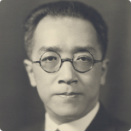Written Vernacular Mandarin
Modern people take it for granted that writing is just a way of recording the spoken word. This has not always been the case and is still sometimes not the case. For example, modern American legal documents are full of Victorian era (or older) terminology and allusions that no modern American uses in speech but modern Americans still expect legal documents to be written in that archaic language.
At the time Mandarin was being formulated in the early 20th Century, literate Chinese people wrote in Classical or Literary Chinese (文言文 or 古文). Classical Chinese is a written language over a thousand years old that bore little resemblance to any language actually spoken by any living 20th Century Chinese person. Classical Chinese was also once the writing system of Japan, Korea, and Vietnam where it was known as kanbun, hanmun, and han van, respectively. That situation was analogous to an Elizabethan era educated Englishman speaking English but writing in Latin. For example, Isaac Newton wrote Philosophiæ Naturalis Principia Mathematica in Latin.
The greatest impediment to Chinese literacy in the early 20th Century was not the complexity of the writing system, it was because the written word bore no resemblance to the spoken word. The single most important reason why most Chinese people are literate today is not because of new phonetic systems like Zhuyin and Pinyin (which certainly helped) and character simplification, it is that Chinese now write in Mandarin as well as speak Mandarin.
Modern people take it for granted that writing is just a way of recording the spoken word. This has not always been the case and is still sometimes not the case. For example, modern American legal documents are full of Victorian era (or older) terminology and allusions that no modern American uses in speech but modern Americans still expect legal documents to be written in that archaic language.
At the time Mandarin was being formulated in the early 20th Century, literate Chinese people wrote in Classical or Literary Chinese (文言文 or 古文). Classical Chinese is a written language over a thousand years old that bore little resemblance to any language actually spoken by any living 20th Century Chinese person. Classical Chinese was also once the writing system of Japan, Korea, and Vietnam where it was known as kanbun, hanmun, and han van, respectively. That situation was analogous to an Elizabethan era educated Englishman speaking English but writing in Latin. For example, Isaac Newton wrote Philosophiæ Naturalis Principia Mathematica in Latin.
The greatest impediment to Chinese literacy in the early 20th Century was not the complexity of the writing system, it was because the written word bore no resemblance to the spoken word. The single most important reason why most Chinese people are literate today is not because of new phonetic systems like Zhuyin and Pinyin (which certainly helped) and character simplification, it is that Chinese now write in Mandarin as well as speak Mandarin.
 Hu Shih
Hu Shih
The one individual most responsible for the fact that Chinese people today write in Mandarin as well as speak it is Hu Shih (胡適). Hu Shih is a remarkable figure in modern China. Hu was born in 1891 in Shanghai, was instrumental in the May Fourth Movement, was president of Peking University, was nominated for a Nobel Prize, was China’s ambassador to the United States in the 1930s, and was president of the Academia Sinica in Taipei, Taiwan where he remained until his death in 1962.
Hu Shih started a movement in 1917, to replace Classical Chinese with written Mandarin or “baihua,” as China’s standard written language. Hu called this movement the “New Literature Movement.” Hu’s movement sought to replace Classical Chinese with written Mandarin so ordinary Chinese could become literate. Needless to say, this had a dramatic effect on Chinese culture. Hu’s program of language reform sought inspiration from traditional Chinese culture rather than borrowing from the West. Hu was critical of many aspects of Chinese culture, but Hu was not contemptuous of traditional Chinese culture as many leftist intellectuals of the time, both foreign and Chinese, certainly were.
Due to Hu’s tireless efforts, from the 1930s to the 1960s Classical Chinese was all but completely replaced by written vernacular Mandarin Chinese. Today, Classical Chinese is used only in formal or ceremonial occasions such as the lyrics of the Republic of China's National Anthem. For the first time in China’s history, the majority of Chinese could become fully literate. Hu’s contribution to modern China cannot be overstated.
Note that while Chinese today both speak and write Mandarin, there are still some differences between spoken Mandarin and written Mandarin. Mandarin learners who become proficient in speaking Mandarin will inevitably be confronted with written Mandarin words and expressions that no one uses in speech. Fortunately, these situations are rare and the reader will usually be able to figure out the meaning from context.
© Copyright 2017 A Little Dynasty LLC, All Rights Reserved, Unauthorized Use Prohibited
Due to Hu’s tireless efforts, from the 1930s to the 1960s Classical Chinese was all but completely replaced by written vernacular Mandarin Chinese. Today, Classical Chinese is used only in formal or ceremonial occasions such as the lyrics of the Republic of China's National Anthem. For the first time in China’s history, the majority of Chinese could become fully literate. Hu’s contribution to modern China cannot be overstated.
Note that while Chinese today both speak and write Mandarin, there are still some differences between spoken Mandarin and written Mandarin. Mandarin learners who become proficient in speaking Mandarin will inevitably be confronted with written Mandarin words and expressions that no one uses in speech. Fortunately, these situations are rare and the reader will usually be able to figure out the meaning from context.
© Copyright 2017 A Little Dynasty LLC, All Rights Reserved, Unauthorized Use Prohibited
